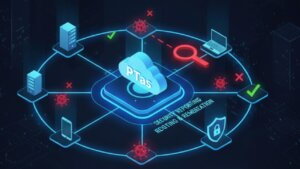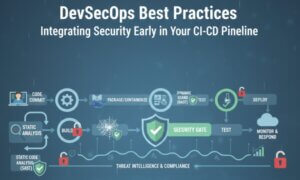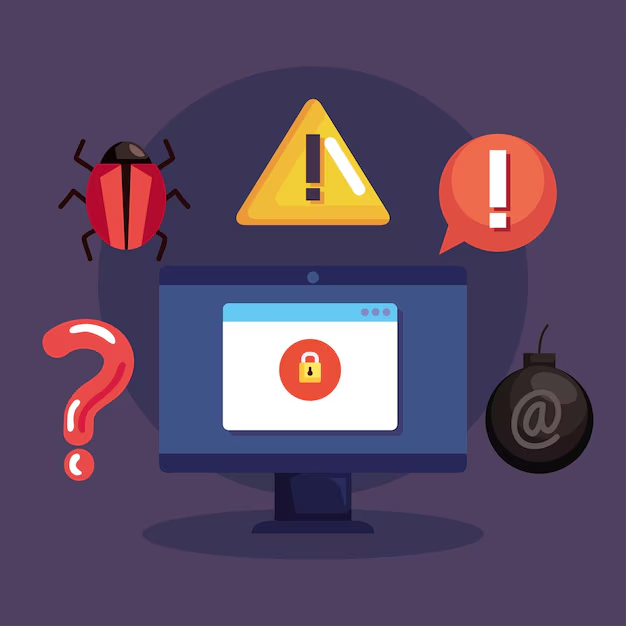As cyber threats grow increasingly sophisticated, security analysts need robust tools to detect, analyze, and neutralize malicious software. Malware sandboxes provide an isolated environment where suspicious files can be executed and observed without compromising system security. In 2025, several advanced malware sandboxes have emerged, offering improved threat detection, evasion resistance, and automation capabilities. This blog explores the best malware sandboxes available in 2025, helping security analysts choose the right tool for their needs.
-Book Your FREE Security Consultation Today!
What is a Malware Sandbox?

A malware sandbox is a controlled, virtualized environment designed to safely execute and monitor the behavior of suspicious software. By isolating threats, these sandboxes help security professionals:
Detect new and evolving malware strains.
Analyze malware tactics, techniques, and procedures (TTPs).
Prevent threats from spreading within an organization’s network.
Automate malware analysis and response.
Before diving into the top tools, it’s essential to understand the key features that make a malware sandbox effective:
Behavioral Analysis: Tracks how malware interacts with system files, network communications, and processes.
Evasion Resistance: Detects and counters malware that attempts to bypass sandbox detection.
Cloud-Based & On-Premise Options: Provides flexibility in deployment based on security needs.
Automated Threat Intelligence Integration: Shares analysis results with security tools like SIEM and threat intelligence platforms.
Support for Multiple File Types: Analyzes executable files, scripts, Office documents, PDFs, and more.

1. Cisco Threat Grid
Overview: Cisco Threat Grid combines dynamic and static malware analysis with global threat intelligence, offering robust detection capabilities. Key Features:
Cloud-based and on-premise deployment options.
Advanced behavioral analysis with deep file inspection.
Threat intelligence integration with Cisco SecureX.
API access for automated analysis.
2. FireEye Malware Analysis (AX Series)
Overview: FireEye’s AX Series delivers in-depth, real-time malware analysis to help organizations detect advanced threats. Key Features:
High-performance hardware and virtual sandboxing.
Multi-vector analysis of files, email attachments, and web links.
Customizable analysis environments.
Detailed forensic reporting and threat intelligence sharing.
3. VMRay Analyzer
Overview: VMRay Analyzer is a powerful malware sandbox that specializes in evasion-resistant dynamic analysis. Key Features:
Hypervisor-based monitoring to avoid detection by evasive malware.
Automated classification of threats based on behavior.
API support for integration with SIEM and SOAR platforms.
Cloud and on-premise deployment options.
4. Cuckoo Sandbox (Open-Source)
Overview: Cuckoo Sandbox is one of the most widely used open-source malware analysis tools, favored by researchers and security teams alike. Key Features:
Modular and customizable architecture.
Supports multiple file types including executables, PDFs, and scripts.
Generates comprehensive reports with API access.
Community-driven development with frequent updates.
5. Palo Alto Networks WildFire
Overview: WildFire integrates seamlessly with Palo Alto Networks’ security ecosystem, providing AI-driven malware detection. Key Features:
Cloud-based sandboxing with machine learning.
Automatic updates based on emerging threats.
Scans emails, endpoints, and network traffic.
Integration with Palo Alto firewalls and Cortex XDR.
6. Sophos Sandstorm
Overview: Sophos Sandstorm enhances endpoint security by analyzing suspicious files before they reach users. Key Features:
Cloud-based malware analysis with real-time scanning.
Seamless integration with Sophos endpoint and email security.
Automated threat intelligence sharing.
Behavioral detection against zero-day threats.
7. Joe Sandbox
Overview: Joe Sandbox is a versatile and highly detailed malware analysis platform, used by enterprises and government agencies. Key Features:
Multi-platform support (Windows, Linux, macOS, Android, iOS).
Extensive API for automation and integration.
Detailed forensic reporting with AI-driven detection.
Evasion-resistant technology.
8. Hybrid Analysis by CrowdStrike
Overview: Hybrid Analysis offers a free and cloud-based malware sandbox with AI-driven threat detection. Key Features:
AI-powered behavior scoring for quick threat identification.
Public and private submission modes for security teams.
Cloud-based with minimal setup required.
Integration with CrowdStrike Falcon platform.
9. ANY.RUN
Overview: ANY.RUN is an interactive, real-time malware analysis sandbox designed for security researchers. Key Features:
Real-time interaction with malware during execution.
Network traffic monitoring and process analysis.
Cloud-based, accessible via a web browser.
Collaboration tools for security teams.
10. G DATA Advanced Analytics
Overview: G DATA’s sandbox solution provides deep malware analysis and threat intelligence. Key Features:
Multi-layered detection with AI-powered analysis.
Integration with enterprise security solutions.
Support for large-scale automated malware investigations.
Cloud and on-premise deployment options.
Choosing the Right Malware Sandbox
Selecting the best malware sandbox depends on an organization’s specific security needs, budget, and infrastructure. Here are some considerations:
Enterprise Security: Large organizations should opt for Cisco Threat Grid, FireEye AX, or Palo Alto WildFire for enterprise-grade threat intelligence.
Evasion Resistance: If analyzing advanced evasive threats, VMRay Analyzer or Joe Sandbox are ideal choices.
Open-Source & Research: Security researchers and budget-conscious teams may prefer Cuckoo Sandbox or ANY.RUN.
Cloud vs. On-Premise: For businesses prioritizing cloud scalability, Hybrid Analysis and Palo Alto WildFire are excellent cloud-based options, while Joe Sandbox and FireEye AX provide robust on-premise solutions.
Conclusion
Malware sandboxes remain a critical component of cybersecurity in 2025, helping organizations detect, analyze, and mitigate advanced threats. With a range of powerful options available—from open-source tools like Cuckoo to enterprise solutions like FireEye and Palo Alto WildFire—security analysts can find a sandbox that best fits their operational needs. Investing in the right sandbox enhances threat intelligence, improves incident response, and strengthens overall cybersecurity defenses.
Why Businesses Trust SecureMyOrg For Comprehensive Network Security
At SecureMyOrg, we uncover and fix all possible security vulnerabilities of mobile and web, while providing solutions to mitigate risks. We are trusted by renowned companies like Yahoo, Gojek and Rippling, and with 100% client satisfaction, you’re in safe hands!






Some of the things people reach out to us for –
- Building their cybersecurity program from scratch – setting up cloud security using cost-effective tools, SIEM for alert monitoring, building policies for the company
- Vulnerability Assessment and Penetration Testing ( VAPT ) – We have certified professionals, with certifications like OSCP, CREST – CPSA & CRT, CKA and CKS
- DevSecOps consulting
- Red Teaming activity
- Regular security audits, before product release
- Full time security engineers.
Relevant Posts

What Is Penetration Testing as a Service?
Penetration testing as a service (PTaaS) lets experts simulate real attacks to uncover vulnerabilities before hackers do. This guide explains the process, benefits, and costs, helping businesses strengthen defenses with predictable, ongoing security checks.

How To Inspect Encrypted Traffic Without Breaking Privacy
Network administrators face a challenge: securing systems while respecting privacy. This guide explains how to inspect encrypted traffic without breaking privacy using metadata, anomaly detection, and machine learning ensuring visibility, compliance, and trust.

How to Audit Infrastructure as Code (IaC) for Security Vulnerabilities
Discover how to audit Infrastructure as Code (IaC) for security vulnerabilities with this practical guide. Learn to scan IaC files using tools like Checkov, fix issues like exposed resources, and integrate audits into CI/CD pipelines. Protect your cloud systems from misconfigurations and ensure compliance with clear, actionable steps.

DevSecOps Best Practices: Integrating Security Early in Your CI/CD Pipeline
This article provides a practical guide to embedding security into every stage of your CI/CD pipeline. Learn core DevSecOps best practices like SAST, DAST, dependency scanning, secrets management, and compliance automation to catch vulnerabilities early, foster a culture of shared ownership, and build a secure-by-design development process that accelerates release cycles.

5 Cloud Misconfigurations That Lead to Data Breaches
Cloud misconfigurations are one of the leading causes of data breaches, yet they’re also among the most preventable. From exposed storage buckets to weak IAM policies, attackers exploit these mistakes daily. Learn about the top 5 misconfigurations and how your organization can fix them before they lead to costly data exposure.

How Can Ethical Hacking Training Elevate Your Internal Cybersecurity?
Ethical hacking training empowers organizations to strengthen internal cybersecurity by uncovering vulnerabilities before attackers do. From mastering penetration testing to enhancing incident response, this training builds a proactive security culture. Learn how Secure My ORG’s programs can elevate your team’s skills and fortify defenses against modern threats like AI-driven attacks.

